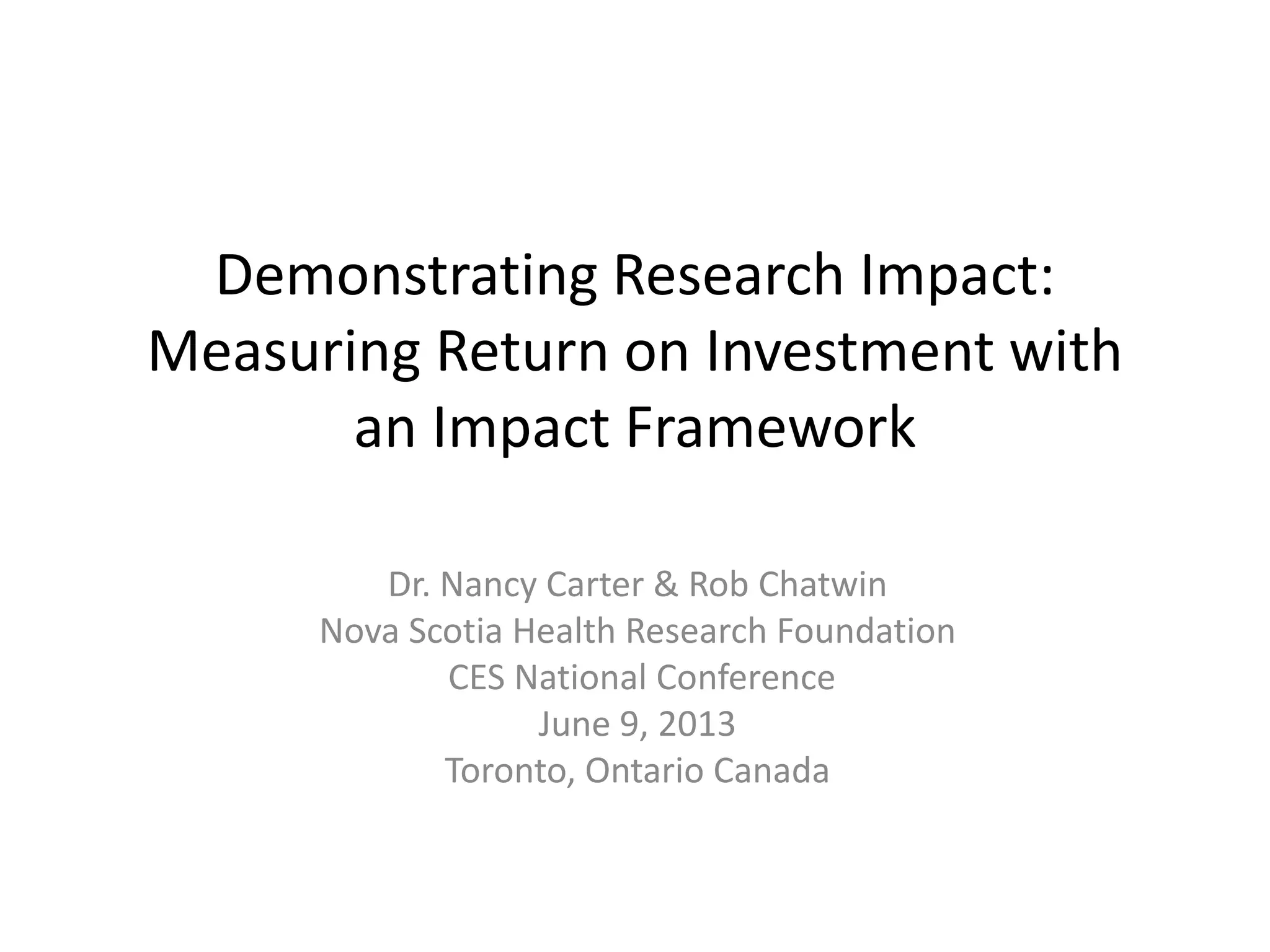The document discusses an impact evaluation framework for measuring the return on investment in health research, detailing the importance of understanding context, evaluation needs, and various evaluation methods. It emphasizes a comprehensive approach to evaluating health research impacts on socio-economic well-being and the necessity of addressing accountability, advocacy, and learning needs in health research organizations. The framework aims to provide insights into cause-and-effect relationships, facilitating informed decision-making and demonstrating the overall effectiveness of health interventions.
































































